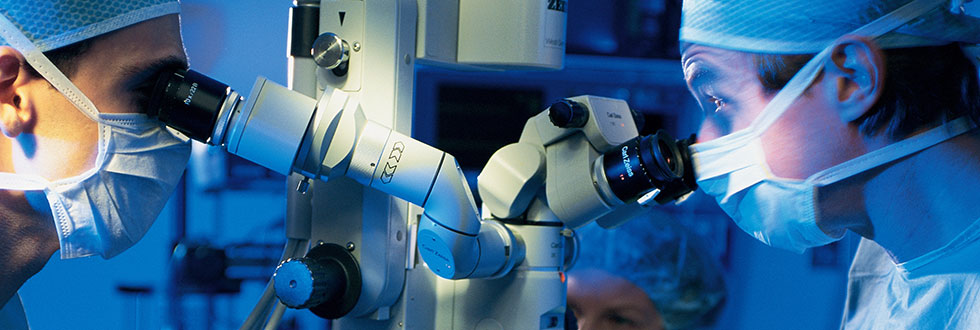MEDICAL & LIFE SCIENCES
Modern image processing is an essential part of medical and life science technology. Reliable machine vision
cameras are used not only in the manufacturing of medical and healthcare products, components and equipment for
medical technology. Laboratory equipment with integrated cameras and image analytic capability can provide high
quality inspection and real time analysis. Digital image acquisition and processing offers a wide spectrum of
possibilities in clinical research for investigating, analyzing and diagnosing illnesses.
Highly sensitive digital industrial cameras are used in microscopy, laboratory automation and diagnostic
equipment, for example in hematology, pathology, ophthalmology and dentistry and for medical motion analysis,
decision support and monitoring of rehabilitation.
Biomedical microscopy
Digital image analysis is found in a wide range of optical microscopy
application fields such as medical and biological research, cell biology, diagnostics, pharmaceutical testing,
or material sciences.
In these applications machine vision cameras are required to provide the highest image quality,
outstanding color reproduction and fidelity and a high dynamic range, all in real-time. These prerequisites
enable reproducible, detailed observation, differentiation and analysis of the most delicate structures in
materials or biological samples, for example in histopathological diagnosis of illnesses and monitoring the
course of illnesses.
Surgical imaging
Today digital cameras are an integral part of systems for optical
microscopic, intraoperative visualization and navigation, and for minimally invasive computer- and
robot-assisted surgery.
Ophthalmology
In the field of eye treatment and diagnosis, sensitivity,
reproducibility, consistency, long servce life, and high image quality are the major requirements for
digital cameras. Machine vision applications are used to survey the visual field, measure the corneal
curvature, and determine the refraction and the detailed representation of the ocular fundus. Machine
vision cameras are also implemented in medical devices for ophthalmological surgeries, such as a cataract
operation.
Dentistry
The latest dentistry technologies rely on digital cameras with high
speed and high resolution. Machine vision is in use for representation of the tooth morphology, of the
upper and lower jaw and the bite in a minimum of time. Machine vision cameras with small housing and
high performance are used in such dental equipment as intraoral scanners and model and impression
scanners.
Other applications
Machine vision cameras are also in use in automated solutions for
scientific or medical diagnostic laboratory applications, where high speed, resolution and image
quality are required. Dermatology also frequently requires image acquisition and analysis, for early
detection of cancer, diagnosing skin lesions, monitoring wound healing processes or for detailed
facial skin analysis in cosmetics. Medical diagnostic imaging needs flexibility, mobility, safety and
comfort for patients. Medical vision systems are typical in diagnostic endoscopic procedures, mobile
digital radiograph systems or systems for monitoring patient positioning and alignment for radiation
therapy. Image analysis is also in use in healthcare and medical applications such as telemedicine,
three-dimensional body analysis, motion capture analysis and patient monitoring.
If you have a project in the medical industry, that needs a machine vision camera or special digital
industrial camera, please visit us with your
questions, we will gladly help you to identify the core parameters, and help you to choose from
hundreds of possible cameras and accessories to get the optimal solution for your problem!
To download a success story on machine vision camera integration to microscopes for cell biology
research, please click here.
